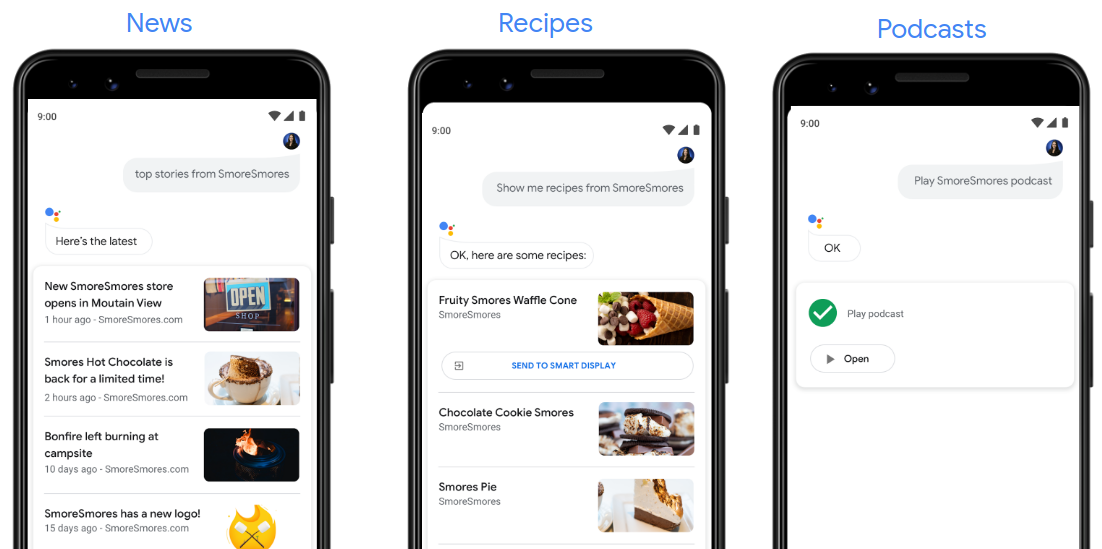Strukturierte Daten informieren Google über die Art der Inhalte, die du erstellst, damit wir sie Nutzern interaktiv präsentieren können. Wir können Ihre Inhalte nicht nur in der Google Suche als Rich-Suchergebnis präsentieren, sondern können Ihr Markup auch lesen, um automatisch eine Aktion zu erstellen. Diese präsentiert Ihre Inhalte in Google Assistant und erstellt einen Eintrag im Assistant-Verzeichnis. Wenn Nutzer Assistant nach einem der verfügbaren Inhaltstypen fragen, wird deine Aktion angezeigt.
Wenn Sie sich erst etwas in das Thema einlesen möchten, sollten Sie sich darüber informieren, wie strukturierte Daten funktionieren.

Inhalte veröffentlichen
Google kann basierend auf den von dir bereitgestellten Webinhalten eine Vielzahl von Aktionen generieren. In der folgenden Liste der unterstützten Inhaltstypen findest du Informationen zum Erstellen von Aktionen für jeden Typ:
| FAQs | Nutzer, die Google Assistant um Informationen zu einem Thema bitten, können in den FAQ-Inhalten die besten Antworten geben. Erstelle Markup für deine FAQ-Inhalte, damit wir automatisch eine Aktion mit deinen Informationen generieren können. Informationen zu FAQ-Aktionen, die mit Markup erstellt wurden, findest du in der Dokumentation zu FAQ-Aktionen. |
| Medien | Nutzer können deine Inhalte in der Google Suche und in Google Assistant finden und die Wiedergabe der Inhalte direkt in deiner App oder auf deiner Plattform starten. Informationen zum Einrichten deiner Medieninhalte findest du in der Dokumentation zu Media Actions. |
| News | Die Nutzer können deine Inhalte im Rahmen von Google News über Google Assistant ansehen, einschließlich des Schlagzeilenkarussells. Wenn du deinen AMP-Seiten strukturierte Daten hinzufügst, können wir deine Nachrichteninhalte bei Google Assistant anzeigen. Informationen zum Einrichten der Inhalte deiner Nachrichtenartikel findest du in der Dokumentation zu strukturierten Daten für Artikel. |
| Podcasts |
Nutzer können deinen Podcast im Assistant-Verzeichnis finden und mit Google Assistant Folgen auf ihren Geräten abspielen. Erstelle einen RSS-Feed für deinen Podcast und wir können automatisch eine Aktion dafür generieren. Weitere Informationen zum Einrichten deines Podcast-Feeds findest du in der Podcast-Dokumentation. |

